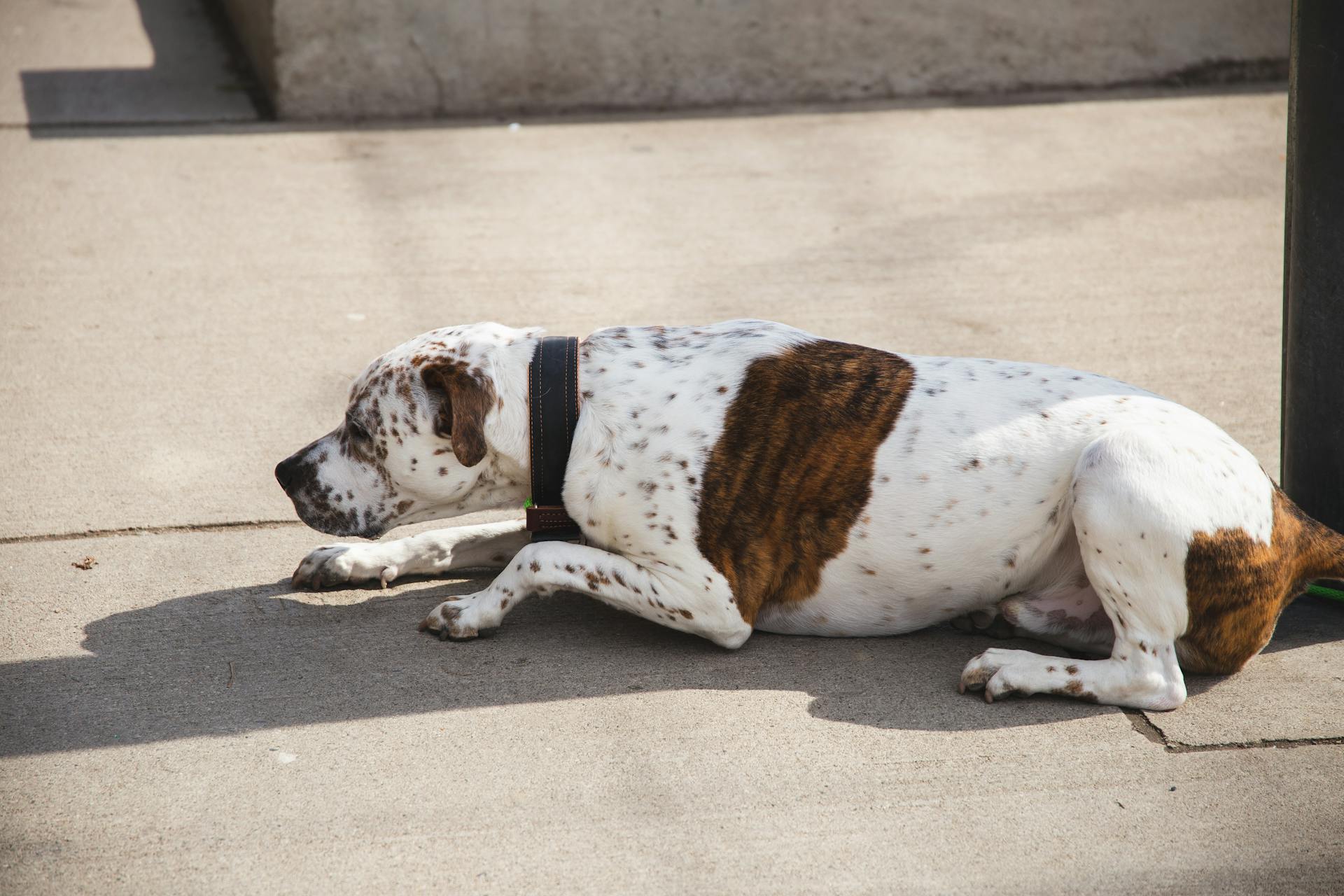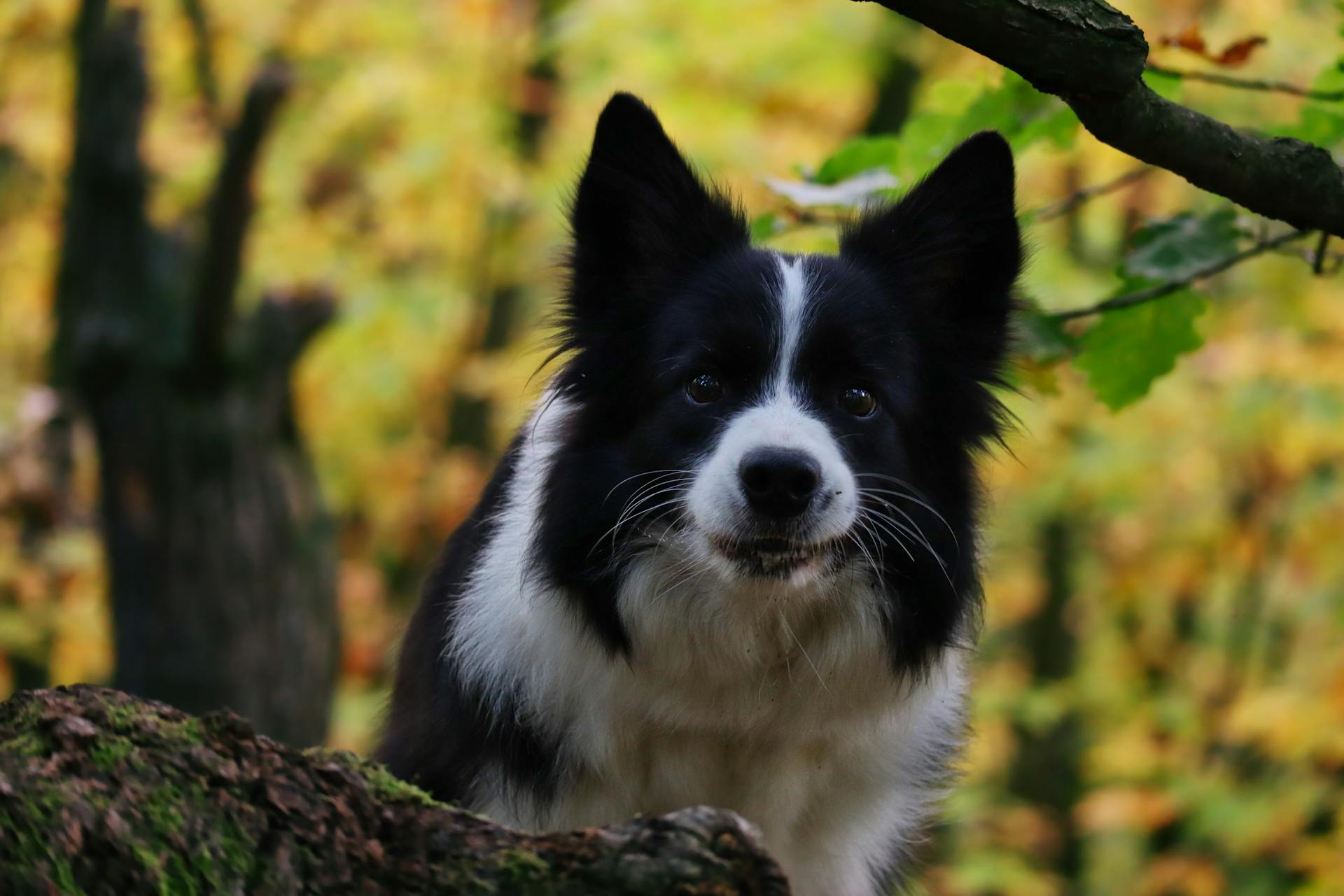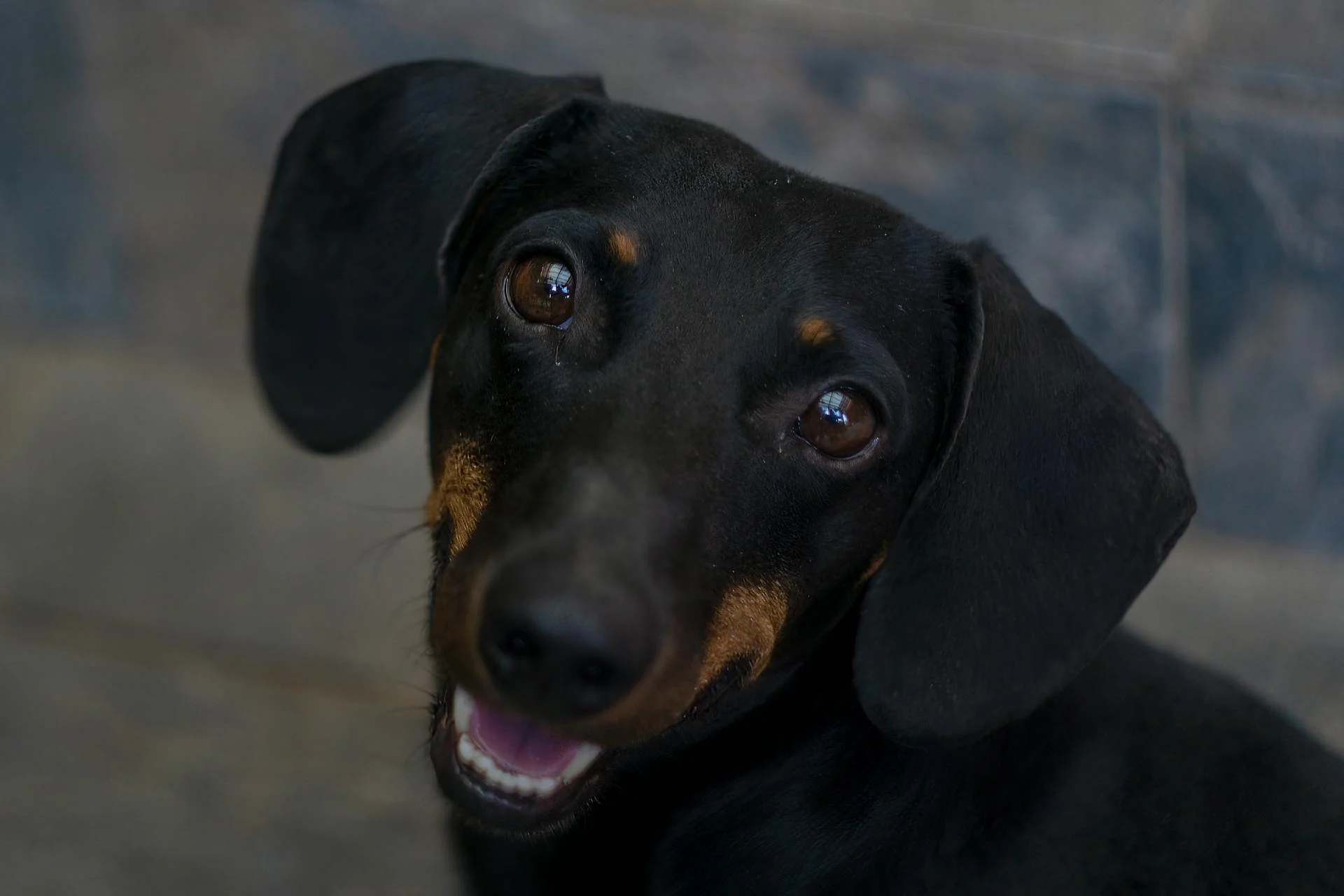
Training a Plott Hound requires patience and consistency, as they can be stubborn at times. With positive reinforcement and early socialization, you can develop good habits and a strong bond with your dog.
Plott Hounds are naturally curious and love to explore their surroundings, so be prepared to provide plenty of exercise and mental stimulation. They thrive on physical activity and need at least 30 minutes of exercise per day.
To get started with training, it's essential to establish a routine and set clear boundaries. Plott Hounds respond well to positive reinforcement, such as treats and praise, and can be easily distracted by their surroundings.
Physical Characteristics
Plott Hounds are muscular and athletic dogs with a short, glossy coat that comes in a variety of colors including tan, red, black, and brindle.
They typically range in height from 20-25 inches, with males being slightly taller than females. Female Plott Hounds usually top out at 20-23 inches in height.
Their short coats make them easy to maintain and keep dry, which is a plus for outdoor activities.
Their fur is considered slightly coarse but still soft to the touch.
Their expressive eyes are black-rimmed with hazel or brown colors, and their long, square-shaped noses are perfect for sniffing out game.
A Plott Hound's long, tapered tail is a great way for them to express themselves, often curled above their back when they're excited or inquisitive.
Health and Care
Plott Hounds are generally healthy dogs, but regular checkups and parasite control are essential to ensure they live a long and healthy life.
Hip dysplasia is a genetic condition that can cause pain and lameness in Plott Hounds, so it's crucial to have their parents screened by a responsible breeder.
Ear infections are common in Plott Hounds due to their floppy ears, which can trap bacteria and moisture, so regular cleaning and grooming are necessary to prevent them.
Obesity is a significant health issue in Plott Hounds, leading to joint pain, diabetes, and heart disease, so monitoring their weight and adjusting their diet and exercise routine accordingly is vital.
Regular exercise and playtime are essential for maintaining the health and happiness of Plott Hounds, and they need at least one hour of exercise daily to burn off their high energy levels.
Plott Hounds have short, smooth coats that require minimal grooming, but regular brushing and nail trimming are necessary to prevent shedding and discomfort.
Their ears are prone to infection, so clearing them often and checking for signs of infection or wax buildup is essential.
A balanced diet and regular checkups with the vet are crucial for maintaining the health of Plott Hounds, and owners should consult with their vet to devise the right diet plan for their dog.
Exercise and Play
Plott Hounds are highly active and energetic dogs that require regular exercise and play to maintain their physical and mental health.
Daily vigorous exercise such as long walks or runs or play sessions with their owner will help to keep the Plott mentally and physically healthy.
Because the Plott is extremely prey driven, he should always be walked on leash.
Playing fetch, tug-of-war, and other games can keep them active and engaged.
Agility training is also a great way to provide mental and physical stimulation to Plott Hounds, improving their coordination, balance, and overall fitness.
In addition to daily exercise, Plott Hounds benefit from interactive play and activities that challenge their minds and bodies.
At least 60 minutes of exercise every day is recommended to keep Plott Hounds happy and healthy.
Plott Hounds are avid runners and love exploring nature, so they thrive on outdoor activities like walks, runs, and dog park frolics.
Without enough exercise, Plott Hounds are likely to vent their frustrations with destructive behaviors, like chewing or digging.
A different take: Activities for Dogs with High Prey Drive
Training and Behavior
Plott hounds are intelligent and energetic dogs that require consistent training and socialization from an early age. They have a strong prey drive and can be dominant, so it's essential to establish a firm and consistent hand when training them.
Plott hounds need at least an hour of exercise per day to burn off their energy and prevent undesired behaviors. They are not well-suited for apartments, but with regular exercise and attention, they can adapt to living in an urban area.
To train a Plott hound, focus on socialization, obedience, and leash training. Establish a routine for potty training and provide a secure space for your puppy to reduce anxiety and behavioral problems. With patience, consistency, and positive reinforcement, you can develop a well-adjusted and confident Plott hound that makes a great companion and hunting partner.
Here are some key training tips for Plott hounds:
- Exposure to different people, pets, and environments from a young age to prevent anxiety and behavioral problems.
- Teaching them to track and follow the scent to develop their natural hunting ability.
- Establishing a routine for potty training and providing a secure space for your puppy.
- Leash training to prevent them from pulling or jumping on the leash.
Socialization and Behavior
Socialization is crucial for Plott Hounds, especially from a young age, to prevent anxiety and behavioral problems. Early exposure to different people, pets, and environments can help them become well-adjusted and confident dogs.
Plott Hounds have a strong prey drive, so it's essential to supervise them around small pets and children. They can be wary of strangers and other dogs, so socialization is key to developing into well-rounded hunting dogs.
A different take: Can Pit Bulls Make Good Pets
Plott Hounds are naturally dominant, but with proper training and socialization, they can get along with most other dogs. They thrive in multi-dog homes, making them a great option for families with multiple pets.
To prevent undesired behaviors, Plott Hounds need at least an hour of exercise and playtime daily. They're not well-suited for apartments, but with proper training and exercise, they can adapt to apartment living.
Here are some essential aspects of Plott Hound socialization:
- Expose them to different people, pets, and environments from a young age.
- Supervise them around small pets and children due to their strong prey drive.
- Train them to work with their handler and follow commands.
- Teach them to track and follow the scent, and stay focused on the task at hand.
By following these socialization tips, you can help your Plott Hound become a well-adjusted and confident companion.
Final Thoughts
Plott Hounds are naturally courageous, but they're also friendly and kind, making them a great fit for families with older kids. They thrive in active homes with a stable routine.
Exercise needs are a must for Plott Hounds, as they require regular physical activity to stay happy and healthy. This can be achieved through daily walks and playtime.
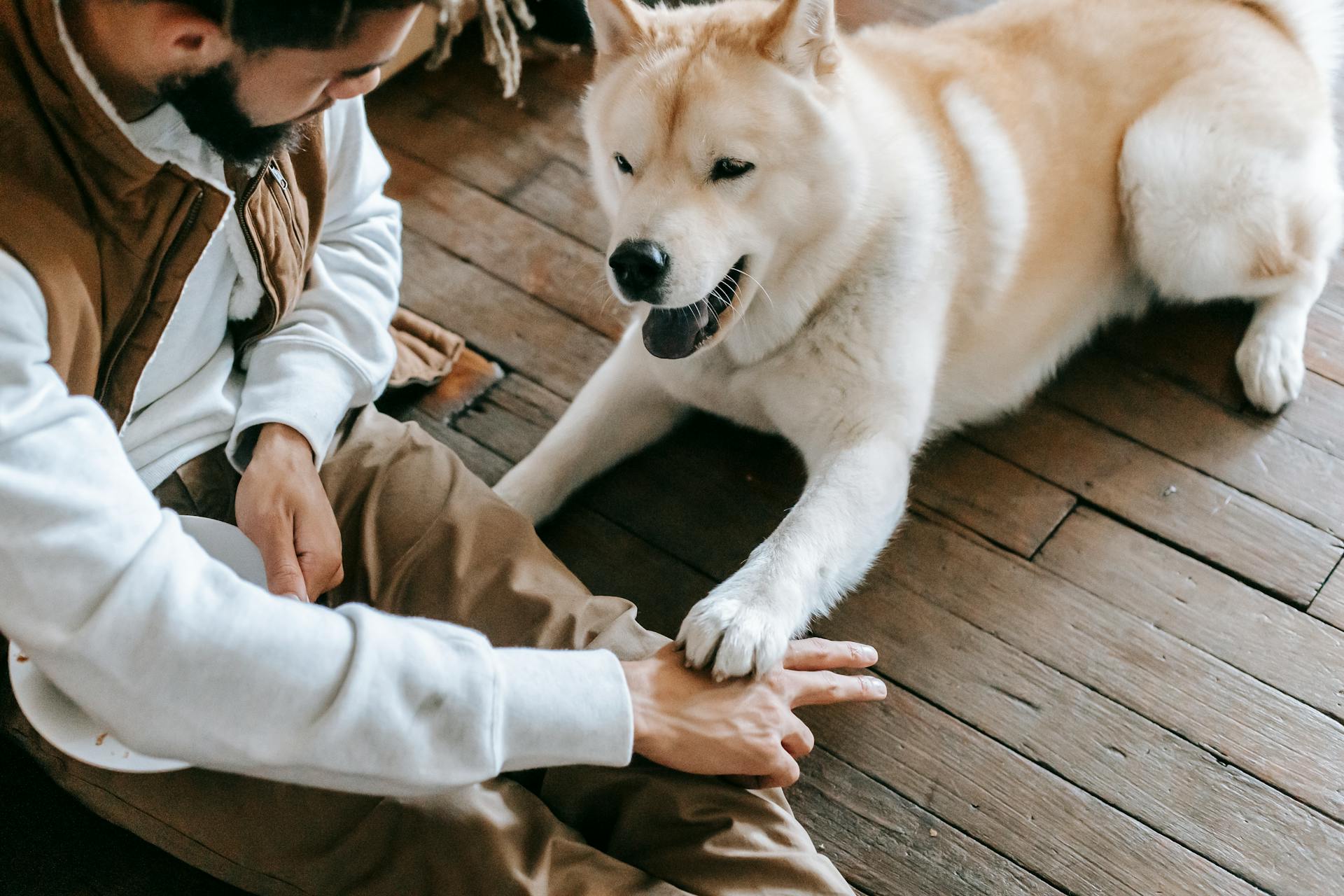
Training is also essential for Plott Hounds, as they can be strong-willed at times. Consistent and positive reinforcement is key to developing good behavior.
They do best in homes with experienced owners who can provide the necessary structure and attention. This can be especially beneficial for households with other pets, such as dogs.
Nutrition and Essentials
The Plott Hound's nutritional needs are relatively straightforward. A high-quality dog food, whether commercial or home-prepared with your vet's supervision, is the way to go.
Make sure the diet is suitable for your dog's age, whether it's a puppy, adult, or senior. Some Plott Hounds are prone to getting overweight, so monitor their calorie consumption and weight level closely.
Treats can be a useful tool in training, but be careful not to overdo it, as too many treats can lead to obesity.
Nutrition
The Plott's diet is a crucial aspect of their overall health, and it's essential to provide them with a high-quality dog food.
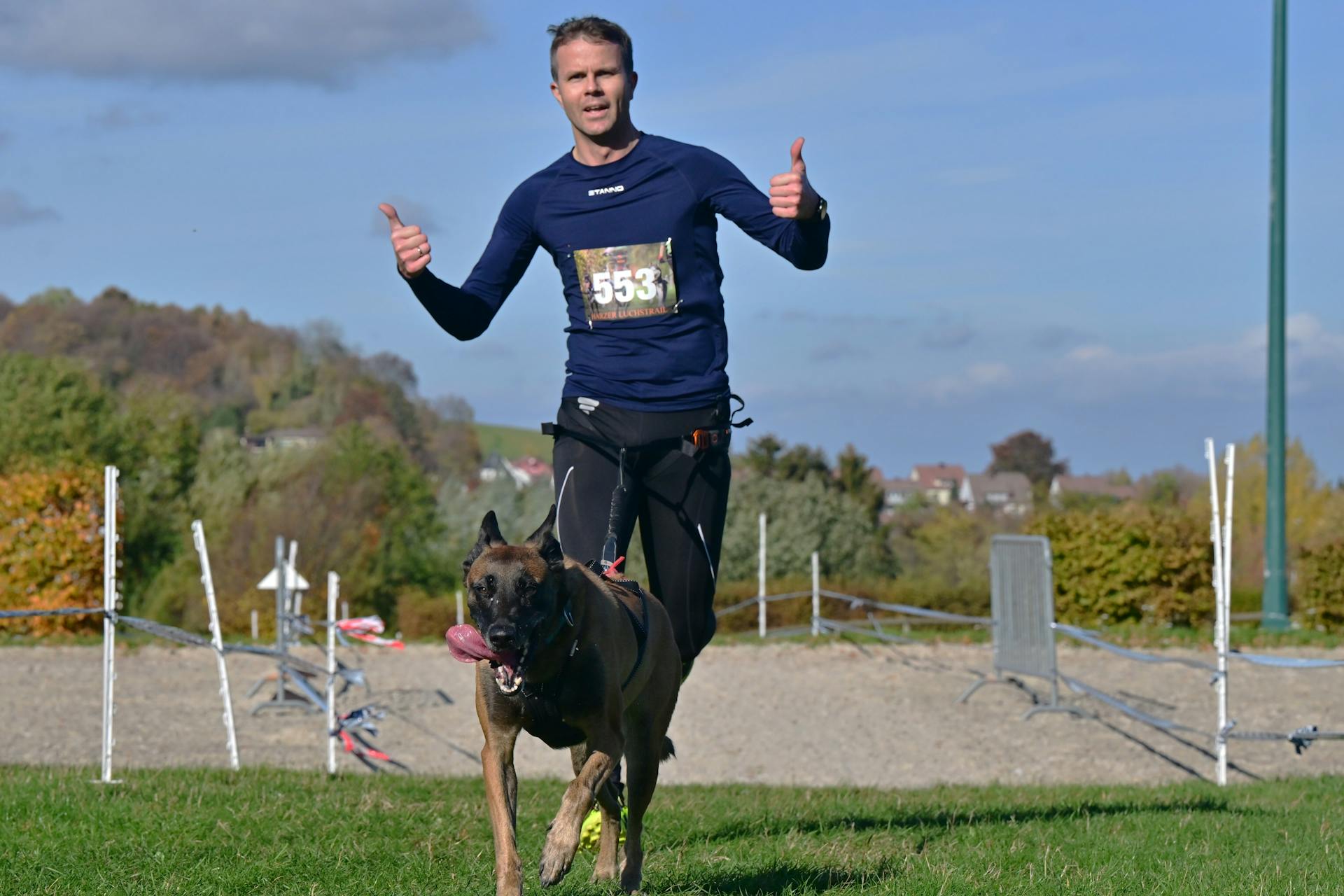
A commercially manufactured or home-prepared diet, approved by your veterinarian, is a great option.
Make sure the diet is suitable for your dog's age, whether they're a puppy, adult, or senior.
Some Plotts can be prone to getting overweight, so keep an eye on their calorie consumption and weight level.
Treats can be a helpful tool in training, but be mindful of the number you give, as overindulgence can lead to obesity.
Fresh, clean water should always be available to your Plott.
Owning Essentials
Having a well-stocked pantry is crucial for a balanced diet.
A good starting point is to have a reliable source of protein such as beans, lentils, and nuts on hand.
These staples can be used in a variety of dishes and are rich in fiber and nutrients.
Aim to have at least a week's worth of non-perishable items stored away.
This can include canned goods like vegetables, fruits, and meats, as well as whole grains like rice, pasta, and oats.
Having a steady supply of healthy fats like olive oil and avocado is also important.
These can be used to add flavor and moisture to a variety of dishes.
Incorporating these essentials into your diet can help ensure you're getting the nutrients you need.
Temperament and Personality
Plott Hounds are intelligent and independent dogs that can be loyal and friendly with their owners.
They require a firm and consistent hand when it comes to training due to their dominant nature.
Plott Hounds are naturally wary of strangers and vocal, which makes them great watchdogs.
They have a good heart and are family-oriented but with enough confidence to go off on their own escapades.
Their independent streak can turn into pigheaded stubbornness, so patience and consistency are key when training.
Plott Hounds are born bear hunters, so they're not afraid of any man or creature and will happily be your furry champion in any disputes.
Their goofy and clownish personality at home makes them a joy to be around, but they can be a bit much at times.
With the right approach and consistency, Plott Hounds can make excellent companions and hunting partners.
A different take: When Is the Best Time to Mate a Female Dog
Living with a Plott Hound
Living with a Plott Hound is a unique experience. Plott Hounds are known for their independent nature, which can make training challenging.
They require consistent and patient training, with a focus on positive reinforcement techniques. This breed thrives on attention and interaction with their human family.
Plott Hounds are prone to baying, which can be a problem for city dwellers or those with noise restrictions. They need regular exercise to stay happy and healthy.
Their short coats require minimal grooming, but their ears do need regular cleaning to prevent infections. Regular veterinary check-ups are essential to monitor their joint health.
Plott Hounds are generally healthy, but they can be prone to certain health issues, such as hip dysplasia and eye problems. With proper care and attention, they can live up to 12 years or more.
Hunting and Sports
For many Plott hound owners, hunting is a big part of the breed's appeal. This versatile dog can track and tree a wide variety of game.
Plott hounds are bred for their strong prey drive, which makes them well-suited for hunting small to medium-sized game like raccoons and opossums. Their keen sense of smell and athleticism also make them a popular choice for hunting larger game like deer and wild boar.
Discover more: Game Bred American Pit Bull Terrier
Hunting with
Hunting with a partner or group can be a fun and rewarding experience. Having someone with you can help with spotting, tracking, and even providing a safety net in case of an emergency.
Hunting with a bow and arrow requires precision and patience, which is why many hunters prefer to hunt with a rifle instead. Rifles are more accurate and can be used at longer distances.
Hunting with a rifle can be more effective than hunting with a bow and arrow, especially for larger game. However, it's essential to note that rifles can be more expensive and require more maintenance.
Hunting with a partner or group can also provide opportunities for learning and skill-sharing. Experienced hunters can teach newcomers about different techniques and strategies.
Hunting with a camera can be a great way to capture memories of your hunting trip, but it's essential to follow all local regulations regarding hunting with cameras or smartphones.
You might like: Hound Group Akc
Getting Started in Dog Sports
Getting started in dog sports can be an exciting and rewarding experience for you and your furry friend. To begin, it's essential to understand the basics of dog sports, which can be found in the "Intro to Dog Sports" section.
You can start by enrolling your mixed-breed dog in a canine partner program, which is a great way to introduce them to dog sports. This is especially true for mixed-breed dogs, as they can excel in various dog sports.
Dog sports often use titles and abbreviations, which can be confusing at first. However, familiarizing yourself with these terms will help you navigate the world of dog sports more easily.
So, which dog sport is right for you and your dog? The "Which Sport Should You Do With Your Dog?" section can help you decide. Consider your dog's breed, size, and energy level when choosing a sport.
To get started in dog training, you'll need to invest time and effort into teaching your dog new skills. The "Get Started in Dog Training" section offers valuable tips and advice on how to do this.
If you're unable to attend in-person dog sports events, you can still participate in virtual dog sports and events. This is a great option for those who live far from dog sports facilities or have mobility issues.
Explore further: Great Pyrenees outside Dog
Frequently Asked Questions
Can Plott hounds be off leash?
Yes, Plott Hounds can be off-leash in a fenced area, but they require daily exercise and a secure enclosure to prevent escape or unwanted roaming.
Are Plott hounds tough?
Yes, Plott Hounds are known for their rugged and relentless nature, making them well-suited for hunting. Their fearless and bold demeanor in the field is balanced by a gentle and mellow personality at home.
Featured Images: pexels.com

